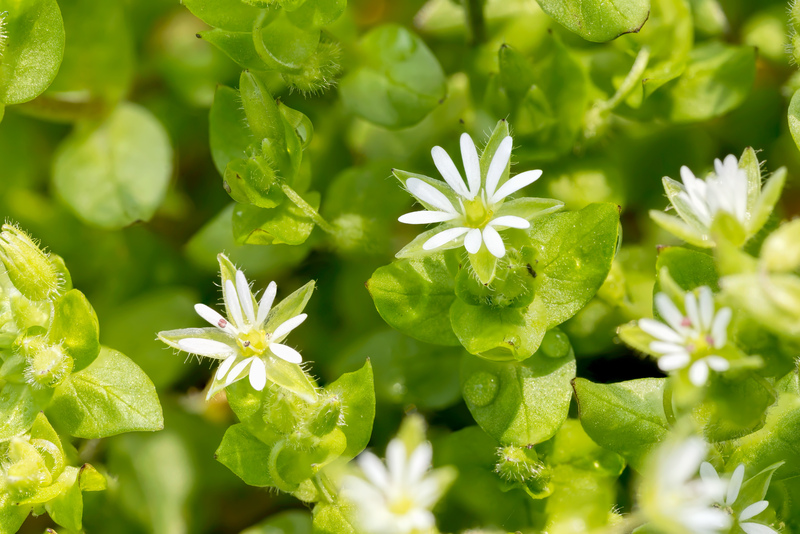Building Weather Resilience in Your Precious Garden Sanctuary
Posted on 26/05/2025
Building Weather Resilience in Your Precious Garden Sanctuary
Welcome to your guide on crafting a weather-resilient garden--a true sanctuary for both you and nature. As climate change increases unpredictable weather events, protecting your garden from frost to heatwaves is more essential than ever. In this article, we'll explore comprehensive strategies and practical tips for building weather resilience in your precious garden sanctuary. Whether you're a beginner or an experienced gardener, this guide has valuable insights to safeguard your green haven from nature's wild cards.

Understanding Weather Risks for Your Garden
Weather resilience means your garden can withstand and recover from extreme conditions such as drought, flooding, heatwaves, or sudden cold snaps. Before building your garden's defenses, it's crucial to understand the local risks. Start by answering these questions:
- What is your climate zone? Knowing your USDA or RHS hardiness zone helps anticipate temperature extremes and plant suitability.
- What weather events are most common or likely? For example, do you get heavy winter snows, late frosts, sudden droughts, or torrential rains?
- What microclimates exist in your space? A sunny wall, shady tree cover, or windbreaking hedge can all alter exposure.
Identifying your unique weather challenges is the first step toward a sustainable, resilient garden sanctuary.
Strategic Plant Selection for Weather Resilience
Choosing the right plants is the foundation of weather-proofing your garden. Here's what to consider:
Native and Adapted Plants
- Native species are naturally suited to your region's conditions, making them more resistant to local weather extremes.
- Drought-tolerant and resilient cultivars can handle water shortages and heat stress.
- Diverse planting--a mix of annuals, perennials, woody plants, and ground covers--enhances overall resilience.
Understanding Plant Hardiness
- Hardy plants can survive unexpected frosts or cold snaps.
- Heat-tolerant varieties are essential as summer temperatures climb.
- Rain garden plants can handle waterlogged conditions and reduce flooding risks.
Opt for deep-rooted species, like prairie grasses or certain shrubs, as they access moisture deeper in the soil during droughts and anchor the soil during storms.
Soil Management for a Sanctuary That Endures
Soil health is your garden's anchor in the face of extreme weather. Healthy, living soil acts as a buffer against both drought and heavy rain.
Keys to Robust Soil:
- Add organic matter: Compost, leaf mold, or well-rotted manure improve water retention and drainage.
- Mulch generously: Mulch insulates roots, retains moisture, and protects from erosion and temperature swings.
- Avoid compaction: Aerate soil gently and avoid heavy machinery to maintain structure and permeability.
- Test soil regularly: Adjust pH and nutrients so plants are robust and better able to recover from stress.
Building resilient soil supports vigorous root systems and fosters a thriving ecosystem below ground, enabling your garden sanctuary to weather almost any storm.
Managing Water in an Unpredictable Climate
Extreme weather events often alternate between drought and deluge. Managing water wisely in your garden sanctuary is crucial for resilience.
Drought-Defensive Practices
- Install water-efficient irrigation: Drip systems or soaker hoses deliver water where roots need it, minimizing evaporation.
- Harvest rainwater: Barrels or tanks reduce dependence on the tap during dry spells.
- Water deeply early in the morning to promote deep root growth and reduce fungal risks.
Coping with Excess Rain and Flooding
- Create rain gardens: These beds filled with moisture-loving plants absorb runoff and prevent waterlogging elsewhere.
- Use permeable surfaces: Gravel paths, mulched beds, and green roofs soak up excess water, slowing down runoff.
- Ensure good drainage: Raised beds and amended soils prevent roots from drowning.
Protecting Plants from Wind and Storms
High winds can break stems, uproot plants, and strip away precious topsoil. Prepare your precious garden sanctuary with these strategies:
- Strategic windbreaks: Hedges of native shrubs or small trees reduce wind speed and create sheltered zones.
- Layer plants in tiers: Taller, wind-resistant species protect softer, smaller plants behind them.
- Staking and supports: Secure vulnerable plants, especially young trees, with gentle ties and stakes.
- Anchor lightweight containers: Move pots to protected areas before predicted storms.
Heat and Cold: Tackling Temperature Extremes
Shielding from Heatwaves
- Shade solutions: Temporary shade cloth, pergolas, or planting taller species for canopy cover can cool tender plants.
- Hydrate proactively: Water in the early evening to help plants cool overnight.
- Mulch heavily: A 2-3 inch layer insulates roots against heat and retains vital moisture.
Guarding Against Frost and Cold Snaps
- Row covers, fleece, or cloches: Use these to shield vulnerable plants during late spring or early autumn frosts.
- Plant in raised beds: Soil in raised beds warms up faster, protecting delicate roots.
- Choose south-facing slopes: They get earlier sunlight and are less prone to cold air pooling.
Garden Design for Maximum Weather Resilience
Smart design not only enhances beauty but strengthens protection. Design your precious garden sanctuary with weather resilience in mind:
Layered Planting and Layout
- Group plants with similar needs to maximize efficiency and reduce risk of stress.
- Mix heights and densities: Layers of canopy, understory, and ground cover buffer temperature and moisture swings.
Flexible Spaces and Structures
- Temporary covers: Portable greenhouses, cold frames, or tunnels can provide emergency shelter during sudden cold or hail.
- Moveable planters: Place pots and containers on rolling stands so they can be shifted for seasonal protection.
Creating Microclimates
- Brick walls absorb heat by day and radiate it at night, protecting against cold snaps.
- Ponds and water features moderate air temperatures and can buffer against dry winds.
Organic Gardening Methods Enhance Resilience
Organic practices nurture strong, adaptable plants and healthier soil, both keys to resilience.
- Diverse plantings: Companion planting and polyculture can reduce pest loads and disease spread after storms.
- Natural mulch: Wood chips, straw, or even living groundcovers offer continual soil protection.
- Compost enrichment: A rich compost culture fosters a robust microbe community that naturally boosts plant immunity.
- Pest management: Encourage beneficial insects and birds to maintain balance when stressed plants are most vulnerable.
Maintenance and Vigilance: The Secret to Garden Longevity
Resilience is not just about preparation--it's also about ongoing care and quick adaptation to changing conditions.
- Inspect regularly: Walk your garden after storms, heatwaves, or freezes, checking for damage or stress signals.
- Prune strategically: Remove dead or damaged growth quickly to prevent disease and encourage healthy regrowth.
- Update your plant selections: Adapt with climate trends by swapping less resilient species for those that have thrived after recent events.
- Track weather data and patterns: A simple logbook helps refine future resilience strategies and plant choices.
Eco-Friendly Tools and Community Resources
Harness technology and local organizations to bolster your preparedness:
- Weather alert apps: Use apps to get real-time updates, frost warnings, or storm forecasts for proactive protection.
- Community gardening groups: Share resources such as frost blankets, water barrels, or expert advice.
- Consult with local extension services: They offer tailored tips, plant lists, and pest updates specific to your region.

Climate-Adaptive Creativity: Embracing Change in Your Garden Sanctuary
Turning climate challenges into opportunities can enliven your garden space. Experiment with new crops, drought-tolerant flowers, or edible perennials. Embrace wild or native plant areas that require less intervention and foster pollinators.
Remember: a resilient garden is not just about surviving the weather--it's about thriving in harmony with it. By nurturing adaptability, diversity, and sustainability, your precious garden sanctuary can bloom beautifully, no matter what the forecast holds.
Conclusion: The Garden Sanctuary of the Future is Resilient
Building weather resilience in your precious garden sanctuary combines practical gardening know-how, smart design, and a willingness to adapt. Start small--plant a few natives, improve your soil, or join a local gardening group--and gradually expand your defenses.
With each season, your garden will grow more robust, sustainable, and breathtaking, offering beauty, solace, and a haven for wildlife--no matter what the skies bring.
Remember:
- Plan for local weather risks
- Choose resilient plants
- Upgrade soil health and water management
- Protect against wind, heat, and cold
- Blend smart design, organic practices, and ongoing care
Your precious garden sanctuary depends on smart, weather-adaptive stewardship. Start today--and cultivate resilience that lasts for generations.



